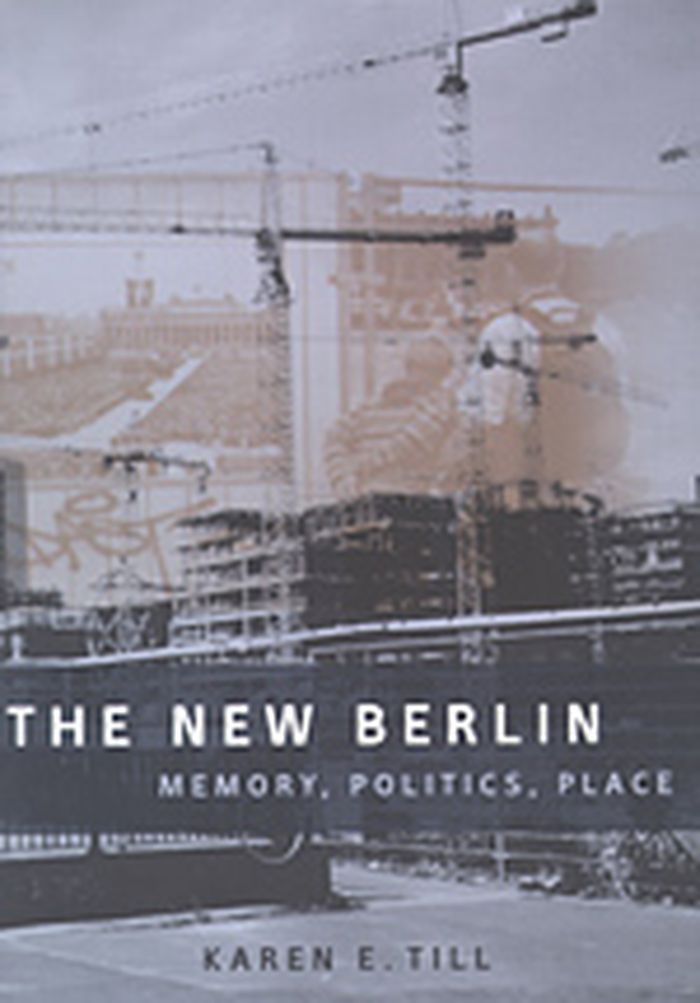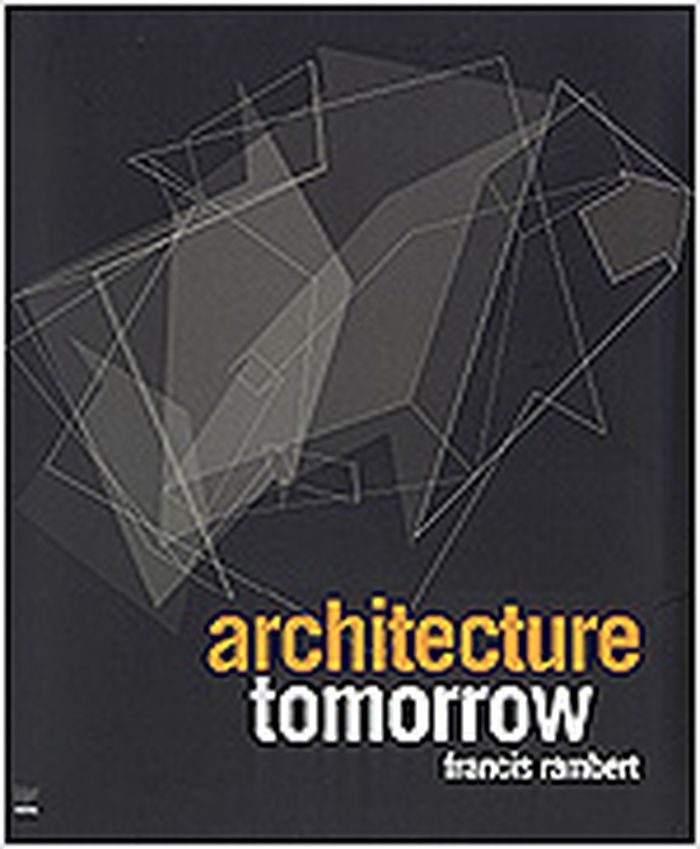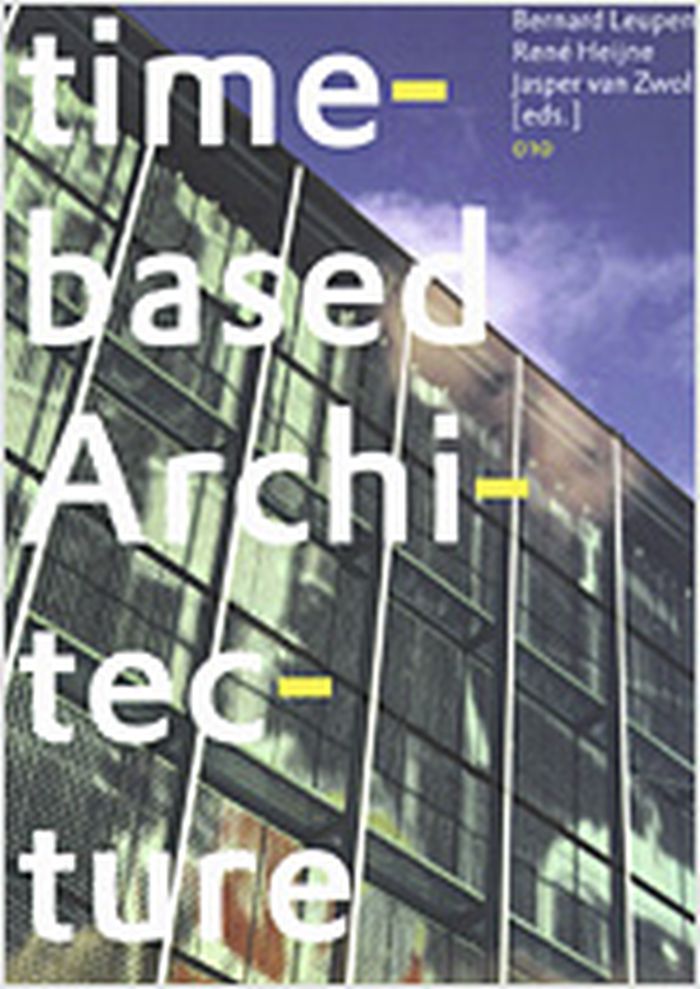$31.25
(disponible sur commande)
Résumé:
"The New Berlin" reveals a city haunted by ghosts from difficult pasts and 'remembered futures', a place where past, present, and future collide in unexpected ways as individuals and groups search for what it means to be German. Karen Till moves through the spaces and times of a city marked by voids, ruins, and construction cranes to search through material and affective(...)
janvier 1900, Minneapolis, London
The new Berlin : memory, politics, place
Actions:
Prix:
$31.25
(disponible sur commande)
Résumé:
"The New Berlin" reveals a city haunted by ghosts from difficult pasts and 'remembered futures', a place where past, present, and future collide in unexpected ways as individuals and groups search for what it means to be German. Karen Till moves through the spaces and times of a city marked by voids, ruins, and construction cranes to search through material and affective landscapes of intentional forgetting and painful remembering.
livres
$135.00
(disponible sur commande)
Résumé:
“Architecture & Arts” documents the innovations brought about by painters, sculptors, designers, writers, photographers, and filmmakers, as well as creators from the widest variety of artistic circles and expressive styles, into the field of architecture. At the same time, it reveals the digressions of architects into the visual arts, a discipline that has shared with(...)
Architecture & arts 1900 /2004 : a century of creative projects in building, design, cinema, painting, sculpture
Actions:
Prix:
$135.00
(disponible sur commande)
Résumé:
“Architecture & Arts” documents the innovations brought about by painters, sculptors, designers, writers, photographers, and filmmakers, as well as creators from the widest variety of artistic circles and expressive styles, into the field of architecture. At the same time, it reveals the digressions of architects into the visual arts, a discipline that has shared with architecture a common project of a radical, at times visionary, aesthetic transformation of reality. The volume includes works by Malevich, Cartier-Bresson, Steichen, Terragni, Depero, Fritz Lang, Le Corbusier, Gehry, Rossi, Piano, and Oldenburg, to name a few. This richly illustrated volume offers a complete overview of architects and artists from the historic avant-gardes (Futurism, Suprematism, Constructivism, Dadaism, Neoplasticism, Expressionism, Surrealism, and the modern movements until the postwar period) to the contemporary world, starting from Informal-Spatialist work and continuing with Situationism, Brutalism, Pop Art, Minimalism, and Post modernism to the present day.
livres
février 2005, Milan
livres
KL(A)152 : la Villette
$49.95
(disponible sur commande)
Résumé:
Gilles de Bure, écrivain et critique, et Aymeric Fouquez, photographe écrivent en trois mots et quelques clics l’histoire de l’étonnante expérience qui consista à édifier en plein milieu du parc de la Villette, (sans permis de construire, il s’agissait d’un aménagement forain, c’est pour cette raison que ces maisons étaient inhabitables, même pour une nuit) deux maisons(...)
janvier 2005, Morey, France
KL(A)152 : la Villette
Actions:
Prix:
$49.95
(disponible sur commande)
Résumé:
Gilles de Bure, écrivain et critique, et Aymeric Fouquez, photographe écrivent en trois mots et quelques clics l’histoire de l’étonnante expérience qui consista à édifier en plein milieu du parc de la Villette, (sans permis de construire, il s’agissait d’un aménagement forain, c’est pour cette raison que ces maisons étaient inhabitables, même pour une nuit) deux maisons à l’architecture contemporaine, avec des procédés issus de la filière sèche. Le bois pour les architectes Aldric Beckmann, et Françoise N’Thépé, l’acier pour Gaëlle Hamonic et Jean-Christophe Masson. Le tout habillé en juste au corps par les épatantes paysagistes Claire Gilot et Daphné Mandel-Bouvard. Cette opération avait pour maître d’ouvrage le visionnaire Eric Justman pour le compte de Renov. Dans un court texte inspiré, Gilles de Bure nous raconte la rencontre d’un site et d’un projet.
livres
janvier 2005, Morey, France
livres
$225.00
(disponible sur commande)
Résumé:
· L'Atlas Phaidon de l'architecture contemporaine mondiale est un ouvrage de référence qui dresse un panorama des ouvrages architecturaux les plus remarquables réalisés à travers le monde depuis 1998. Cet ouvrage sans précédent présente 1052 bâtiments à travers 75 pays qui témoignent de manière unique de l'étonnante diversité de l'architecture en ce début du XXIe siècle.(...)
décembre 2004, Paris
Atlas Phaidon de l'architecture contemporaine mondiale
Actions:
Prix:
$225.00
(disponible sur commande)
Résumé:
· L'Atlas Phaidon de l'architecture contemporaine mondiale est un ouvrage de référence qui dresse un panorama des ouvrages architecturaux les plus remarquables réalisés à travers le monde depuis 1998. Cet ouvrage sans précédent présente 1052 bâtiments à travers 75 pays qui témoignent de manière unique de l'étonnante diversité de l'architecture en ce début du XXIe siècle. Chaque édifice a été choisi pour ses caractéristiques innovantes, qu'elles soient esthétiques, fonctionnelles ou techniques. Les réalisations d'architectes de renommée internationale côtoient dès lors celles d'architectes de la nouvelle génération ou à ce jour inconnus en dehors de leur pays. Organisé géographiquement en six régions, l'Atlas Phaidon inclut tous les types de constructions depuis les résidences privées de petite taille, les chapelles, les établissements vinicoles ou les ateliers d'artistes jusqu'aux immenses stades, aéroports, gratte-ciel, salles de concert et usines. Chaque édifice, localisé géographiquement à l'aide de cartes spécialement réalisées pour cet ouvrage, est présenté à travers des photographies, plans, élévations et coupes permettant de comprendre les grands principes de sa conception. Les textes rappellent le contexte dans lequel le bâtiment a été construit, tout en expliquant les caractéristiques qui le définissent. Ils fournissent ainsi une source d'informations essentielle pour les professionnels. Chaque projet a été sélectionné parmi une vaste liste proposée par un comité constitué de diverses figures du monde de l'architecture, universitaires, critiques, conservateurs, journalistes et praticiens. Une section informative intitulée " Données mondiales " détaille le nombre d'architectes, d'écoles et d'étudiants en architecture pour chaque pays, et un système de références croisées répertorie les édifices réalisés par chaque architecte dans toutes les régions du monde. Un système d'index complet permet au lecteur de trouver l'information qu'il recherche à travers différentes rubriques : type d'édifice, nom de l'édifice, architecte et lieu. Cet ouvrage célèbre l'architecture contemporaine et constitue un outil de référence indispensable pour les bibliothèques spécialisées en architecture à travers le monde. Agréable à lire, il fournit une source d'inspiration inépuisable pour ceux qui s'intéressent à l'environnement construit de notre époque et à son devenir.
livres
décembre 2004, Paris
livres
Paris - Les Halles
$49.95
(disponible sur commande)
Résumé:
Une description détaillée des enjeux d’un grand projet et des propositions de quatre grandes équipes d'architectes. Trente ans après l’aménagement du quartier des Halles, la Ville de Paris a engagé une réflexion sur ce site afin de réaliser un processus de requalification du lieu. Dans ce cadre, la SEM Paris Centre a été mandatée pour conduire les études préalables à ce(...)
janvier 1900, Paris
Paris - Les Halles
Actions:
Prix:
$49.95
(disponible sur commande)
Résumé:
Une description détaillée des enjeux d’un grand projet et des propositions de quatre grandes équipes d'architectes. Trente ans après l’aménagement du quartier des Halles, la Ville de Paris a engagé une réflexion sur ce site afin de réaliser un processus de requalification du lieu. Dans ce cadre, la SEM Paris Centre a été mandatée pour conduire les études préalables à ce projet d’aménagement qui concerne différents acteurs : la région, la ville de Paris, la société civile du Forum des Halles de Paris qui est propriétaire des espaces commerciaux, etc. Cet ouvrage présente les enjeux pour les différents partenaires mais également les projets des 4 grandes équipes d'architectes en compétition : AJN – Jean Nouvel, MVRDV – Winy Maas, OMA – Rem Koolhaas et SEURA – David Mangin. Comme l'explique Jean Nouvel : « Le réaménagement du quartier des Halles est un grand projet, non dans le sens où ce terme fut employé pour la Bibliothèque de France ou l'Opéra Bastille, mais parce qu'il concerne une question complexe et centrale : requalifier un quartier qui, de centre de la capitale, est devenu par la grâce d'un nœud ferroviaire et métropolitain, le centre de l'Ile de France ». L'ensemble des projets a été présenté lors d’une exposition publique au Forum des Halles et a fait l’objet d’une concertation avec les associations représentatives des riverains et des usagers.
livres
janvier 1900, Paris
Architecture tomorrow
$59.95
(disponible sur commande)
Résumé:
En Europe, les trois quarts de la population vivent en milieu urbain : en Asie, c'est de l'ordre de 40 %. Mais de quoi la ville de demain sera-t-elle faite ? Quelles architectures, quels espaces publics ? Quelle pensée, quels concepts domineront les deux décennies à venir ? Autant de questions soulevées par "Architecture tomorrow", un livre sur l'évolution du cadre de(...)
Architecture tomorrow
Actions:
Prix:
$59.95
(disponible sur commande)
Résumé:
En Europe, les trois quarts de la population vivent en milieu urbain : en Asie, c'est de l'ordre de 40 %. Mais de quoi la ville de demain sera-t-elle faite ? Quelles architectures, quels espaces publics ? Quelle pensée, quels concepts domineront les deux décennies à venir ? Autant de questions soulevées par "Architecture tomorrow", un livre sur l'évolution du cadre de vie contemporain aux prises avec la mondialisation. Qu'ils soient dédiés au travail ou aux loisirs, à l'habitat ou au commerce, à la santé ou à l'éducation, les lieux deviennent de plus en plus hybrides. Mais au-delà de la complexité inhérente à cette nouvelle génération de programmes, les bâtiments se doivent d'intégrer la démarche planétaire de " développement durable ". Parallèlement, l'heure n'est plus à l'utopie mais à l'expérimentation dans trois domaines en perpétuel croisement : architecture, social et culturel. En ce XXI° siècle placé sous le signe de la transversalité, l'architecture se nourrit des emprunts aux autres disciplines - l'art contemporain notamment - mais s'enrichit aussi des transferts de technologie. Manipulations informatiques aidant, les architectes peuvent explorer de nouveaux champs et donner corps à leur rêve d'espace. Le musée Guggenheim de Bilbao, icône de la modernité s'il en est, a ouvert l'autoroute de possibilités infinies ; et la gare maritime de Yokohama a déjà pris le relais... Ainsi apparaissent de nouvelles formes, de nouvelles matières, de nouveaux lieux dans ces bâtiments parfois singuliers, mais toujours spécifiques. Car on ne se risquerait plus aujourd'hui à parler d'" avant-garde ". Dans cet esprit de prospective, "Architecture tomorrow" propose plus qu'une revue des tendances : c'est l'analyse, au bout du compte, des " attitudes " des architectes en réponse aux questionnements d'une société envahie par l'image. Ils se montrent en phase avec cette mutation accélérée ; beaucoup anticipent les usages, les modes de vie. Sculpturaux ou immatériels, générateurs d'urbanité ou catalyseurs de flux, les œuvres et projets présentés dans ce livre s'attachent à réaffirmer l'architecture comme un véritable acte culturel. En paysage urbain comme dans le grand paysage naturel. Une rue sous une immense voile de verre à Milan, une ambassade conçue comme une promenade à Berlin, des logements suspendus au-dessus de l'eau à Cordoue, une immense plaque perforée jouant l'interface avec le patrimoine de Saint-Etienne... L'architecture contemporaine d'offre à nous dans une prodigieuse ingéniosité où le poétique sait le disputer à la technique, le social au monumental, l'éphémère au pérenne.
livres
11 écoles d'architecture
$23.95
(disponible sur commande)
Résumé:
Après l'exposition en 2001 de 12 écoles d'architecture en Europe, le FRAC Centre présente, en lien avec la manifestation ARCHILAB, des travaux d'étudiants issus de 11 écoles d'architecture dans le monde (France, Portugal, Pays-Bas, Espagne, Suisse, Grande-Bretagne, Japon, Chine). Dans cet ouvrage, les projets questionnent la relation de l'architecture à son(...)
janvier 1900, Orléans
11 écoles d'architecture
Actions:
Prix:
$23.95
(disponible sur commande)
Résumé:
Après l'exposition en 2001 de 12 écoles d'architecture en Europe, le FRAC Centre présente, en lien avec la manifestation ARCHILAB, des travaux d'étudiants issus de 11 écoles d'architecture dans le monde (France, Portugal, Pays-Bas, Espagne, Suisse, Grande-Bretagne, Japon, Chine). Dans cet ouvrage, les projets questionnent la relation de l'architecture à son environnement, et abordent, entre autres, les notions de développement durable, de recyclage urbain, les stratégies d'intégration dans le territoire (disparition, mutation, etc.), et d'interaction de l'architecture avec son contexte. Publication d'un catalogue à l'occasion de l'exposition au FRAC Centre "11 écoles d'architecture", du 29 mai – 14 juillet 2002.
livres
janvier 1900, Orléans
livres
$111.95
(disponible sur commande)
Résumé:
Conçu par Bart Lootsma, critique de renommée internationale, le catalogue réunit trente équipes d'architectes internationaux autour des nouveaux enjeux de l'espace urbain : globalisation, dérives, smart mobs, nouvelles technologies…
Archilab 2004 : la ville à nu
Actions:
Prix:
$111.95
(disponible sur commande)
Résumé:
Conçu par Bart Lootsma, critique de renommée internationale, le catalogue réunit trente équipes d'architectes internationaux autour des nouveaux enjeux de l'espace urbain : globalisation, dérives, smart mobs, nouvelles technologies…
livres
juin 2004, Orléans
Mallorca Boom
$63.95
(disponible sur commande)
Résumé:
The transformation that has taken place in Mallorca during the last 50 years was unimaginable, especially for elderly residents. However, the last decade has been the one in which the island suffered a lack of control more centred on speculation and not so much on necessity. Certainly Mallorca depends on tourism (no other alternative, providing similar or better(...)
janvier 1900, Barcelona
Mallorca Boom
Actions:
Prix:
$63.95
(disponible sur commande)
Résumé:
The transformation that has taken place in Mallorca during the last 50 years was unimaginable, especially for elderly residents. However, the last decade has been the one in which the island suffered a lack of control more centred on speculation and not so much on necessity. Certainly Mallorca depends on tourism (no other alternative, providing similar or better prospects, has been presented yet). Aware of the need, we built a territory too fast. In this book, a look from the outside is proposed, taken by people with a relationship to the island, with an affection for it, but who, from a distance, can offer a fresher opionion of what could happen. Texts are provided by architects, designers, biolgists, etc. Photographs are by Jordi Bernado.
Time-based architecture
$49.50
(disponible sur commande)
Résumé:
In the course of the 20th century it became increasingly clear that architecture is by no means a timeless medium. The late 1960s in particular were marked by research into techniques that would allow buildings to be adapted to suit the requirements of the day. This often led to buildings that were programmatically neutral and characterless. The new challenge facing(...)
janvier 1900, Rotterdam
Time-based architecture
Actions:
Prix:
$49.50
(disponible sur commande)
Résumé:
In the course of the 20th century it became increasingly clear that architecture is by no means a timeless medium. The late 1960s in particular were marked by research into techniques that would allow buildings to be adapted to suit the requirements of the day. This often led to buildings that were programmatically neutral and characterless. The new challenge facing architects is designing for the unknown, for the unpredictable. 'Form follows function' is giving way to concepts like polyvalence and semi-permanence. New spatial and constructional structures generate freedom, taking time as their departure-point. Alongside theoretical reflections on such time-based architecture, this book illustrates countless projects involving the time factor, ranging from Shigeru Ban's Naked house, an apartment building in Malmö by Gert Wingardh and Kas Oosterhuis's Emotive house to OMA's mixed-use complex 'De Rotterdam'.



